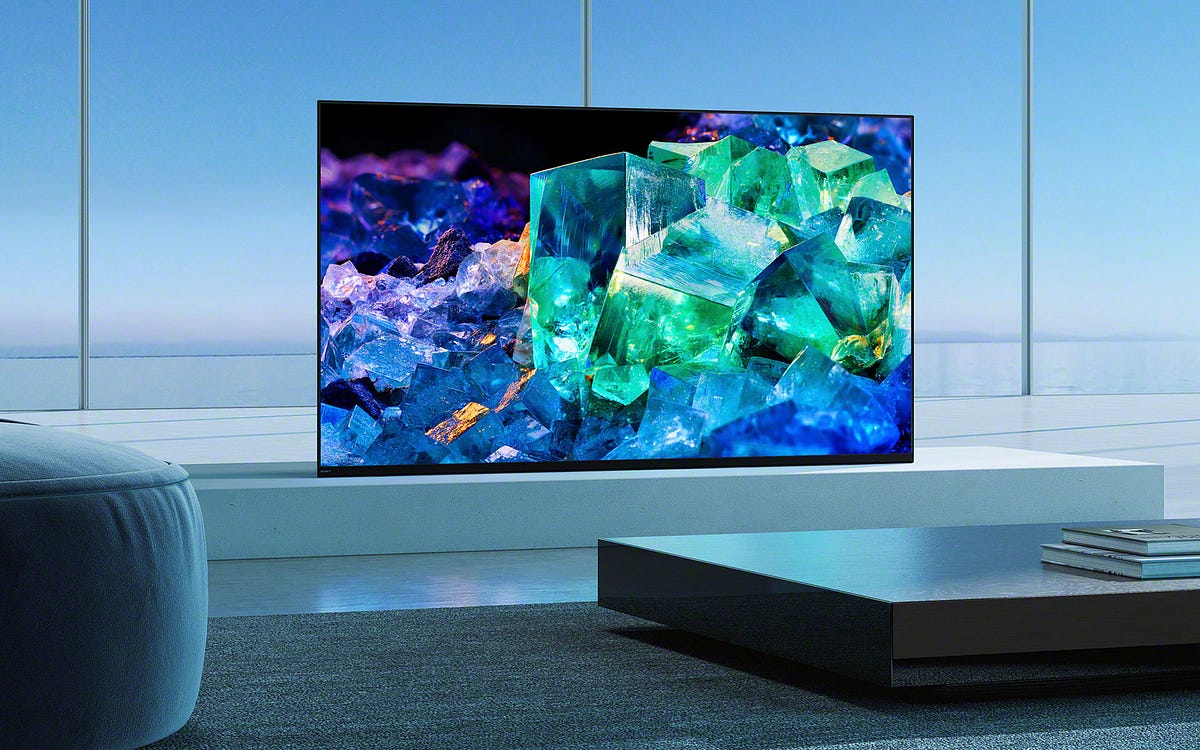CES 2022: Sony Launches the World’s First QD-OLED TVs
Picture quality higher than that of OLED TVs promised, a face-off with Samsung’s models all but certain
KOSTAS FARKONAS
PublishED: January 7, 2022

Whoever said that tech events have to be predictable or boring? In an unexpected turn of events, it is actually Sony, not Samsung, the manufacturer that announced the first QD-OLED TV in the world during CES 2022 — despite the former getting the necessary panels from the latter, despite the persistence of rumors (since early summer) that Samsung would be launching its own QD-OLED TV sets first. There may be more to this story regarding Samsung’s choice to not show its hand during CES 2022 (and we may or may not find out exactly what led to this) but, in the meantime, Sony’s Bravia A95K is the first announced TV set based on Quantum Dot OLED technology. Given the fact that the Japanese call it their flagship television for 2022, their excitement is understandable.
The A95K will be available in 55-inch and 65-inch sizes, both of 4K resolution, sporting all of the latest Sony features: the powerful XR Cognitive Processor, Acoustic Surface Audio Plus, Ambient Optimization Pro, Bravia Cam compatibility and access to Bravia Core. It is, of course, based on Google TV. It will feature gesture control, two full-bandwidth HDMI 2.1 ports plus a new, redesigned remote control.

The star of the show is, of course, the screen of the A95K itself: QD-OLED strives to combine the pixel-level control and perfect blacks of OLED with higher brightness and color volume than what typical OLED TVs can offer. We will see how all this pans out in practice once the first review units are available, of course, but Sony would not risk putting the A95K above the legendary A90J (which carries over to 2022) in its new TV lineup if the former did not offer a better picture overall. The company has also used a heat-dissipation layer, like the one found in A90J, in order to drive the QD-OLED panel harder for longer periods of time, as well as temperature mapping to reduce the risk of image retention.
Sony has also made an unusual choice regarding the design of the A95K, making sure that it does not look like any other Bravia TV currently on the market: it brought back the “invisible stand” approach of its very first OLED TV, the A1, giving consumers the option to set the A95K in such a way that its stand is either completely hidden behind the screen or fully visible in front of it (if they prefer putting the set on a surface but against a wall). Based on the press photos alone the latter option is not as good-looking as the former, but it certainly is a unique design for a 2022 TV — even if using a soundbar with the A95K may prove to be a challenge.

As is usually the case with CES reveals, pricing and retail availability for the Sony Bravia A95K will be announced at a later date. Samsung’s own QD-OLED TV models are expected to be unveiled during Q1, so it seems that we’re heading for a good, old fashioned duel between the Koreans and the Japanese: two televisions based on the exact same panel means that they will be competing on design, picture quality — in other words: image processing — general functionality, sound and price. May the best manufacturer win!




















